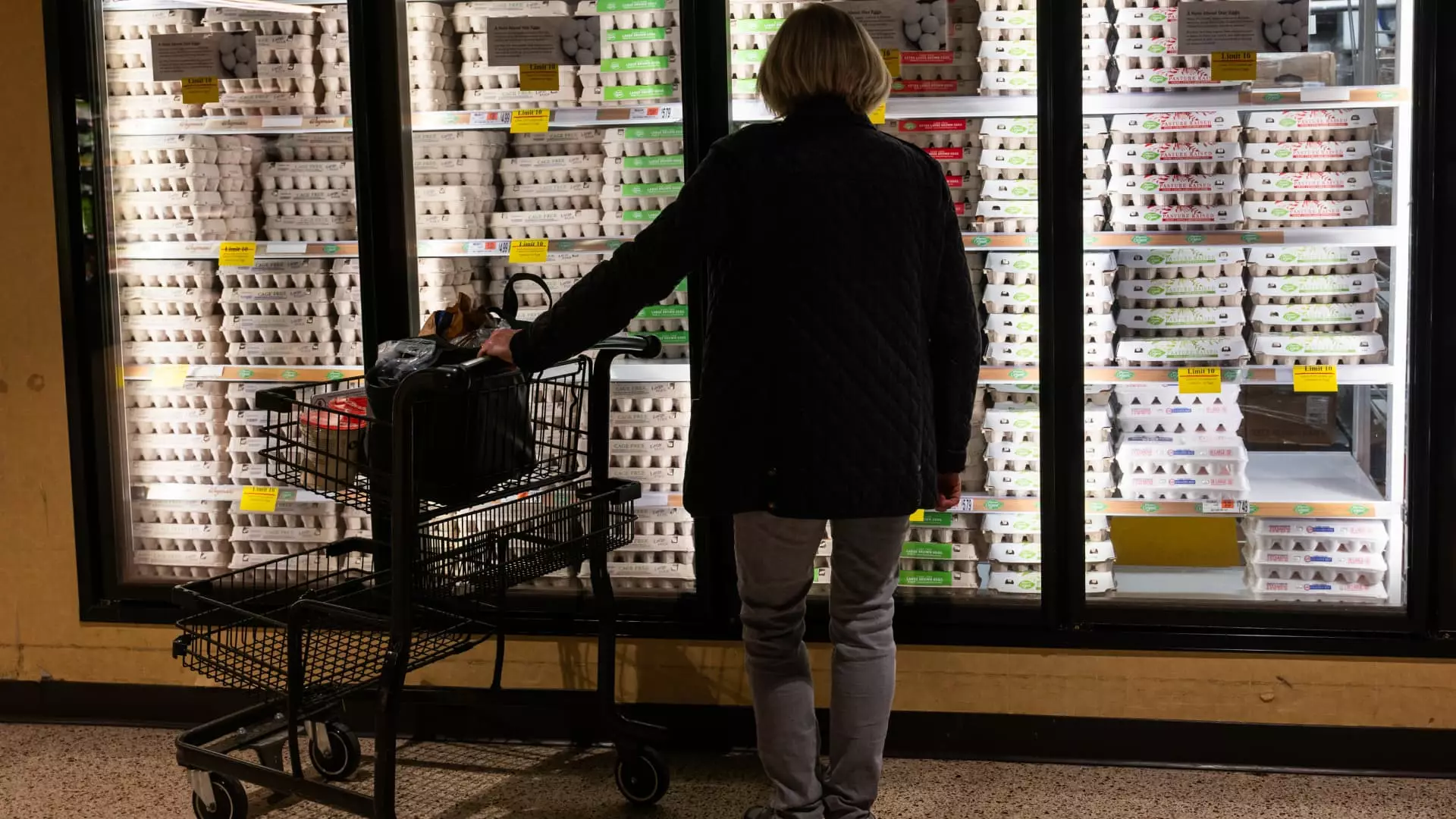In a perplexing twist that has seasoned consumers scratching their heads, wholesale egg prices have dramatically plummeted from the dizzying heights of $8.58 per dozen earlier this year to a more palatable $4.83 recently. While this seems reassuring for those suffering from sticker shock at the grocery store, the fundamental question remains: will retail prices follow suit? The short answer is uncertain. Analyzing this predicament reveals shocking truths about a fragile agricultural economy that may never revert to its former steady state.
Egg prices soared earlier this year, largely due to widespread bird flu outbreaks that decimated millions of egg-laying hens, resulting in supply chain disruptions. Now, with the avian virus appearing to be under control, one would expect a quick normalization of prices. However, the underlying dynamics at play indicate that this situation is more complicated than a simple market correction. According to data from Expana, the egg market is under “extreme pressure,” suggesting that external economic forces and consumer psychology are intertwined in a complex dance that is far from over.
Consumer Behavior: The Pandemic’s Lingering Effects
One major player that cannot be overlooked in this saga is consumer behavior. The outbreak of bird flu served as a traumatic reminder of the supply scarcity we experienced during the height of the COVID-19 pandemic. As a result, households began stockpiling eggs, motivated by a fear of soaring prices and potential shortages. This behavioral shift may leave a psychological scar on the market, as consumers may choose to hold onto their existing supplies for fear of future price hikes. Consequently, buying patterns have changed, and this could lead to a more permanent shift in consumption habits.
Despite a recent decline in wholesale prices, which is invigorating for budget-conscious buyers, retail prices remain dishearteningly high. Currently hovering around $5.90 for a dozen large grade-A eggs, the pain point is felt acutely by families across the nation. Yet, as eggs become a more precious resource, we may need to reconsider how we use and value them. The effect of consumer behavior on retail pricing is rarely linear, and experts anticipate that supermarkets may keep prices elevated regardless of how drastically wholesale prices decline.
Government Oversight: An Uncertain Safety Net
Adding another layer of complexity is the ongoing antitrust investigation launched by the U.S. Department of Justice into the practices of major egg producers. The idea that monopolistic practices could be contributing to inflated prices is deeply troubling. While competition generally serves as a crucible for driving prices down, the concentration of power within a handful of producers could be undermining the very market freedoms that enable fair pricing. As consumers, we must ask ourselves if we trust the government to effectively regulate these forces, or whether bureaucratic inefficiencies may worsen the plight of consumers in the long term.
Additionally, the months leading up to Easter often see a spike in egg demand—a time when naturally savvy retailers jostle to balance supply and consumer desires. With Easter right around the corner, any hope for a swift reduction in prices might be dashed by seasonal buying trends. As many scramble to fill baskets, the lack of excess supply could keep prices inflated even as the wholesale market adjusts.
Looking Ahead: The Fragility of Supply Chains
The U.S. agricultural supply chain remains precariously balanced, and volatility seems inevitable. The current reductions in wholesale prices may provide a fleeting comfort, but they should not distract consumers from the persistent issues lurking beneath the surface. The reliance on a few key producers introduces a vulnerability that is both alarming and frustrating. Retailers have a choice—one that they have the power to shape. If they opt to keep their prices high while claiming to respond to market fluctuations, how can consumers protect themselves?
Consumers need to be astute about where and how they shop and take a proactive approach to sourcing food. Adopting a more local mindset could provide some reprieve, but it requires significant shifts in consumption and labeling practices. In an age where individuals feel particularly disenfranchised by rising costs, the case for transparency and ethical business practices becomes even more compelling.
In this tumultuous landscape, one thing is clear—the battle for equitable egg pricing is only just beginning. The social contract of fair pricing is fraying, and both consumers and producers must engage in a dialogue if we hope to forestall future crises. As troubling as the resurgence of high prices may appear, it may herald a time when we rethink the relationship we have with what has long been considered a kitchen staple.

